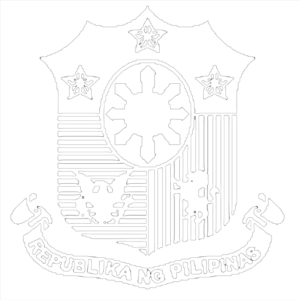FREQUENTLY ASKED QUESTIONS ON THE PHILIPPINE EPASSPORT
An electronic Passport (ePassport) is a passport which features microchip technology. An integrated (IC chip) within its pages contains the data that are essential in verifying the identity of the passport holder. These data include the personal data found on the data page of the passport, the passport holder’s biometrics, a unique chip identification number, and a digital signature to verify the authenticity of the data stored on the chip.
The chip technology allows the information stored in an ePassport to be read by special chip readers at a close distance.
Biometrics are the unique and measurable physical characteristics of an individual that include face recognition, fingerprints and iris scans.
The Philippine ePassport uses the digital image of the passport photograph that can be used with face recognition technology to verify the identity of the passport holder.
It also captures the fingerprints of the passport holder, for identification using the Automated Fingerprint Verification System (AFIS).
The Philippine ePassport allows information stored on the chip to be verified with the information visually displayed on the passport.
It uses contactless microchip technology that allows the information stored on the chip to be read by special chip readers at a close distance.
It contains an integrated photograph of the holder, a digitized secondary photo, and an electronic print of the holder’s signature. It also contains overt and hidden security features.
An MRP is a passport that contains a machine-readable zone (MRZ) printed in accordance with International Civil Aviation Organization (ICAO) standard. It is capable of being read manually and with the use of a machine.
An ePassport has an embedded IC chip where the photograph and personal information of the bearer are stored in accordance with ICAO specifications. These information can be read by chip readers at close distance. An ePassport also contains a machine-readable zone.
The ePassport is highly secure, hence it avoids passport reproduction and tampering. The ePassport database is enhanced with AFIS that guards against multiple passport issuances to the same person and enhances imposter detection.
It facilitates fast clearance of travellers at immigration checks.
ePassports provide travellers benefits such as use of automated border clearance or “E-gates,” automated issuance of boarding passes, and faster travel arrangements with airlines.
For countries, the use of ePassports also provides better border protection and security.
The MRP has the minimum ICAO standards in travel documents. The ePassport is the world standard in travel documents. As an ICAO member, the Philippines has an international obligation to enhance the security of its travel documents.
The issuance of ePassports will allow the Philippines to offer world-class consular services to its nationals.
Countries have greater confidence and acceptance of the ePassport since it is enhanced with biometric technology.
ePassports are already being used in more than 60 countries worldwide. In ASEAN, five countries have already issued e-passports (Singapore, Brunei, Darrusalam, Malaysia, Thailand and Cambodia).
ePassports are already being used in more than 60 countries worldwide. In ASEAN, five countries have already issued ePassports (Singapore, Brunei, Darussalam, Malaysia, Thailand and Cambodia). In the future, all countries are seen to switch to the ePassport due to the increasing need for efficient and better border security.
The ePassport logo which appears on the cover of the ePassport is the international symbol for an electronic passport. It means that the passport has an integrated circuit or chip on which data about the passport and passport holder is stored. The logo will alert border inspection lanes at all airports and transit ports equipped with special data readers for ePassports that the passport is an ePassport.
All applicants who can comply with the documentary requirements may avail of the ePassport.
The Philippine Embassy in Canberra began issuing ePassports on 23 November 2010. Beginning 04 January 2011, the Embassy will only issue ePassports and no longer the MRP.
The fees in accordance with Department Order 13-09 for Australia are:
ePassport: A$ 108.00
Lost ePassport: A$ 270.00
Currently, we accept cash and debit card only.
The added security features of the ePassport are factored into the production cost. Comparative prices of the ePassport from different countries, however, show that the cost of the Philippines ePassport is among the lowest in the world.
Yes. Previously issued passports (MRP and non-MRP) are valid until their expiry. It is a good practice to make sure your passport is valid at least six months before intended date of travel to avoid any inconvenience.
None. Essentially, the requirements for ePassport processing will remain the same as that for the MRP, although personal appearance is required for the taking of biometrics (i.e., fingerprints, photo and signature).
As soon as the production of the ePassport comes into full swing, holders of MRPs can have their passports cancelled and apply for ePassport if they so wish.
Applicants can apply for an ePassport at the DFA Manila, the DFA’s regional offices throughout the Philippines, Philippine Embassies and Consulates abroad and mobile passport services scheduled in your areas.


